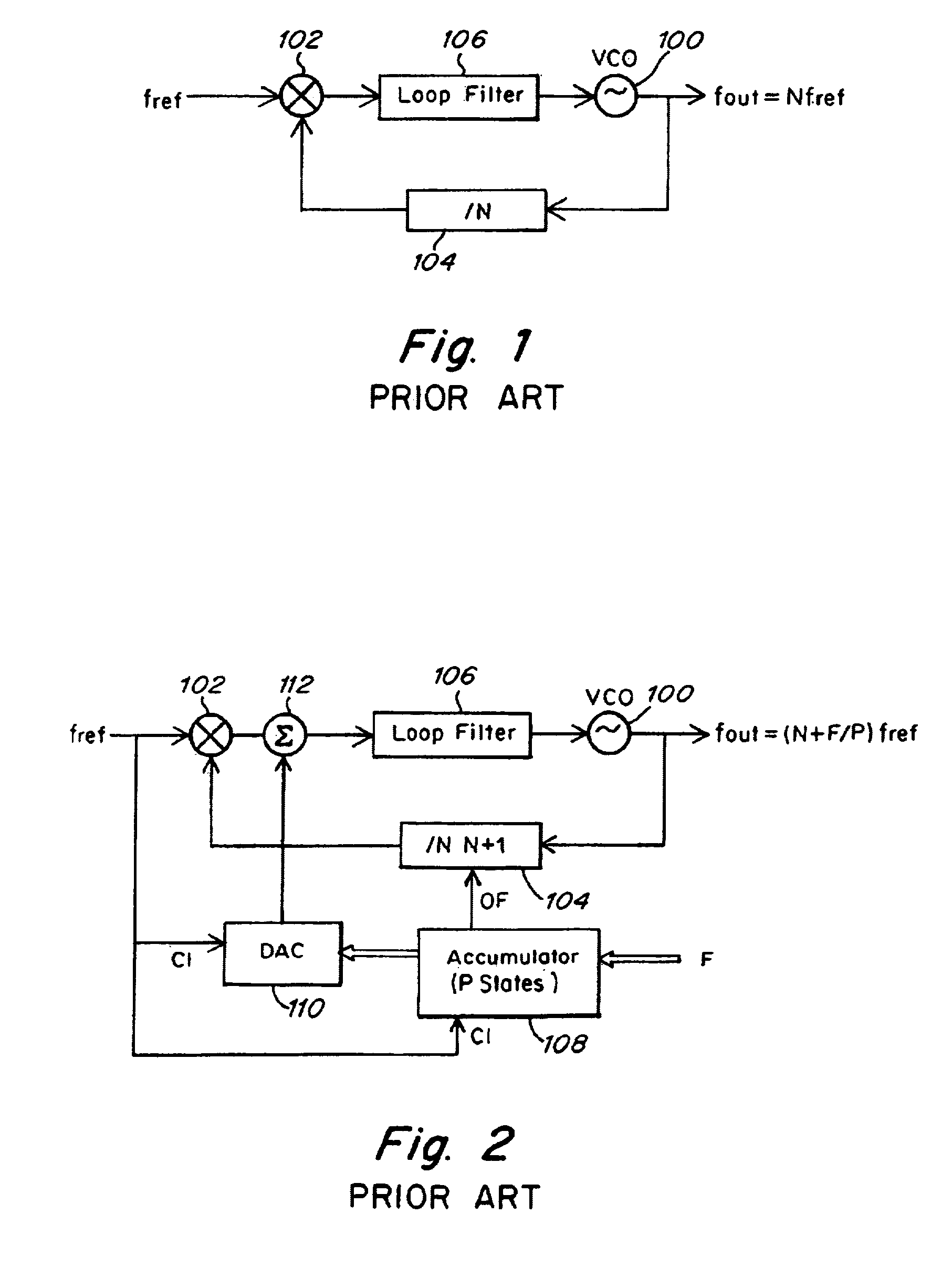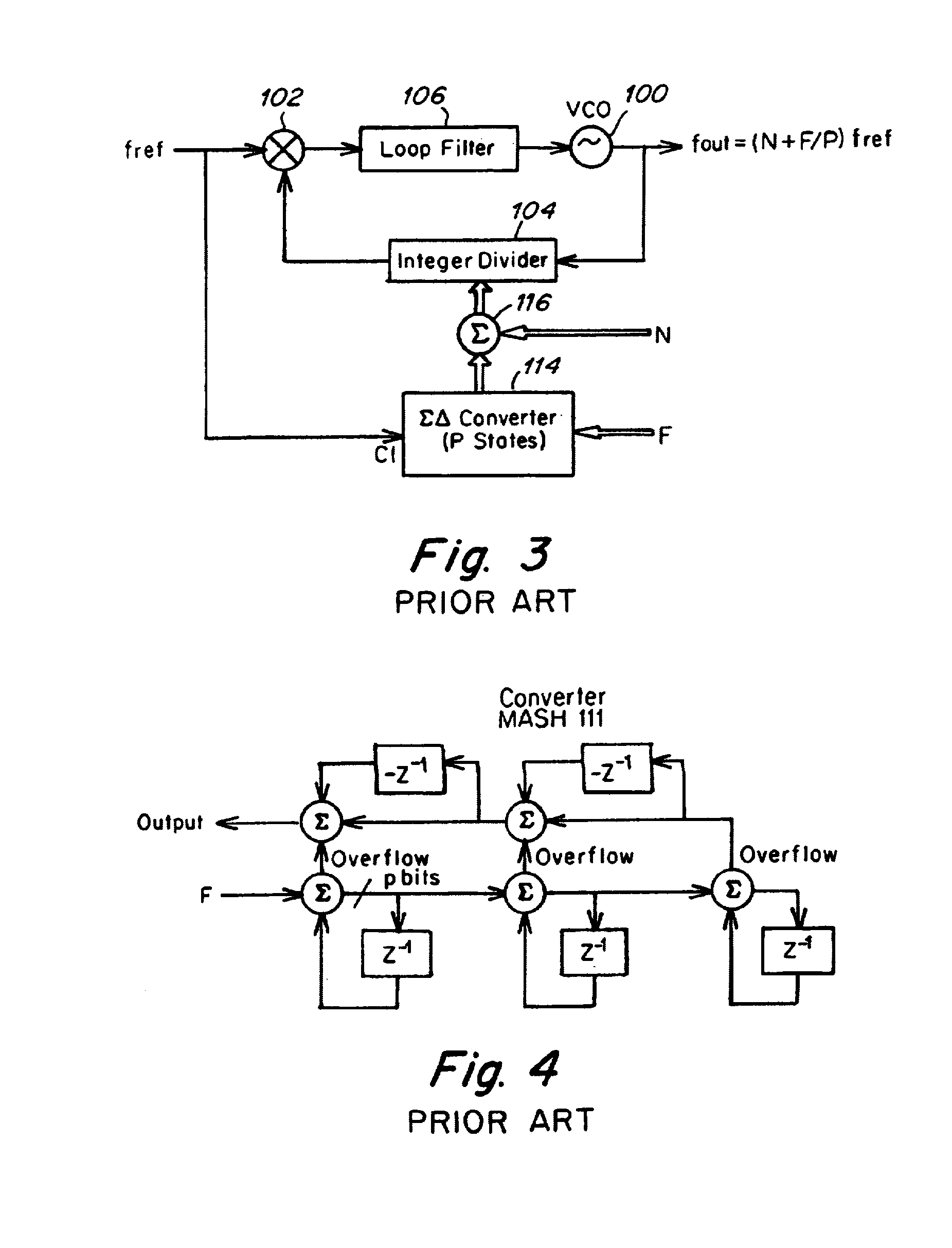Fractional-N frequency synthesizer with cascaded sigma-delta converters
a technology of cascaded sigma-delta converter and frequency synthesizer, which is applied in the field of frequency synthesizers, can solve the problems of high power consumption, interference from other frequency synthesizers, and the approach does not solve phase noise or frequency resolution problems, so as to reduce the clock rate
- Summary
- Abstract
- Description
- Claims
- Application Information
AI Technical Summary
Benefits of technology
Problems solved by technology
Method used
Image
Examples
Embodiment Construction
[0050]Referring now to FIGS. 5–8, a fractional-N frequency synthesizer in accordance with the invention is designated as 10 and comprises a tunable oscillator 12, such as a voltage controlled oscillator (VCO), a phase detector 14, an integer divider or divisor circuit 16 arranged in a feedback loop of the oscillator 12 to the phase detector 14, and a loop filter 18 interposed between the phase detector 14 and the oscillator 12.
[0051]A frequency synthesizer 10 in accordance with the invention also includes components for generating a division control number for the integer divider 16 which has an integer portion and a fraction portion made up of two or more fractions. By separating the fraction portion into multiple fractions, it is possible to increase the number of possible output frequencies generated by the frequency synthesizer 10, without significantly increasing the power consumption.
[0052]Generally, in accordance with the invention, the fraction portion of the division contro...
PUM
 Login to View More
Login to View More Abstract
Description
Claims
Application Information
 Login to View More
Login to View More - R&D
- Intellectual Property
- Life Sciences
- Materials
- Tech Scout
- Unparalleled Data Quality
- Higher Quality Content
- 60% Fewer Hallucinations
Browse by: Latest US Patents, China's latest patents, Technical Efficacy Thesaurus, Application Domain, Technology Topic, Popular Technical Reports.
© 2025 PatSnap. All rights reserved.Legal|Privacy policy|Modern Slavery Act Transparency Statement|Sitemap|About US| Contact US: help@patsnap.com



